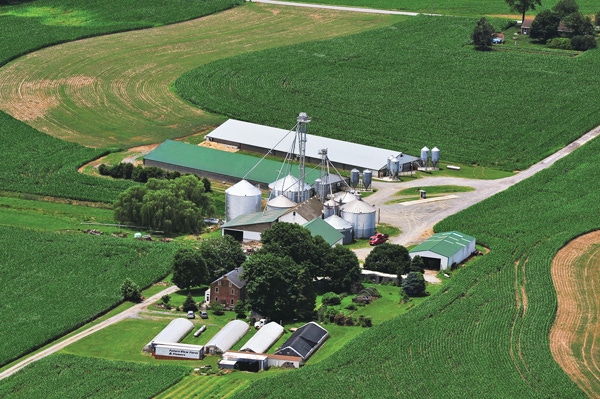A record large algal bloom in Lake Erie motivated ag and conservation groups toward a nutrient reduction plan.
April 10, 2013

National Hog Farmer’s sister publication, Feedstuffs, reports that agriculture and conservation groups are working with state regulatory agencies and academic experts to develop a plan of action for reducing the flow of nutrients from farm fields into bodies of water throughout the Eastern Corn Belt on the heels of a record-large algal bloom in Lake Erie. Rather than await additional legislative or regulatory scrutiny, a working group recently developed a draft standard for a voluntary nutrient stewardship certification program.
According to Feedstuffs, following a massive amount of springtime precipitation in 2011, a confluence of farming practices and weather conditions fed an algal bloom covering some 2,000 square miles of the Lake. This bloom was more than three times larger than any algal bloom previously observed on Erie’s waters.
Scientists from nine academic and research institutions looked at the mix of meteorological conditions and farming practices that led to the bloom, and analyzed the likelihood of future blooms occurring. Their conclusion, published in the journal Proceedings of the National Academy of Sciences, is that the types of intense spring rainstorms involved in the 2011 bloom are part of a “long-term trend” for the region that is projected to worsen due to climate change.
Such massive precipitation events led to increased agricultural runoff, ultimately resulting in record levels of dissolved reactive phosphorus (DRP) in the Lake. Excess levels of DRP tend to fuel rampant algae growth such as the 2011 Lake Erie bloom.
Trends toward increased adoption of no-till farming practices, autumn fertilizer application and broadcast application of fertilizers were also cited as contributing to the DRP issue. The paper’s authors said that the need for phosphorus fertilizers isn’t likely to abate any time soon due to record levels of corn production.
Michael Moore, a professor of environmental economics at the University of Michigan, told Feedstuffs, “Corn is the crop on which phosphate-based fertilizer is most heavily applied. So the intensification of corn production is a problem, and part of the solution would be to rethink this emphasis on corn production for biofuels.”
Agricultural business and organizations, however, say that an improved focus on stewardship of key crop-related nutrients will lead to an improvement of the DRP situation in Lake Erie and other bodies of water affected to nutrient runoff issues. An advisory committee of experts from Indiana, Michigan and Ohio has developed a draft standard for a voluntary nutrient stewardship certification program for nutrient service providers.
The advisory committee is working with The Nature Conservancy, a leading environmental and conservation organization, to facilitate the development of the third-party certification standard. The Conservancy’s project manager for the Western Lake Erie Basin, Carrie Vollmer-Sanders, said the draft standard also includes an educational component to ensure that new practices related to nutrient stewardship are adopted by nutrient retailers, applicators and their farmer customers.
Based on the "4Rs" of nutrient management, the standard will serve as guidance for agricultural retailers and fertilizer applicators in implementing best practices and educating their customers.
Visit the Feedstuffs Web site for more information. Carrie Vollmer-Sanders of The Nature Conservancy discussed the Lake Erie algal bloom and draft nutrient stewardship certification standard with Feedstuffs editor Andy Vance in the latest episode of Feedstuffs In Focus, the podcast of big issues in agriculture. You can listen to their conversation here.
You May Also Like



